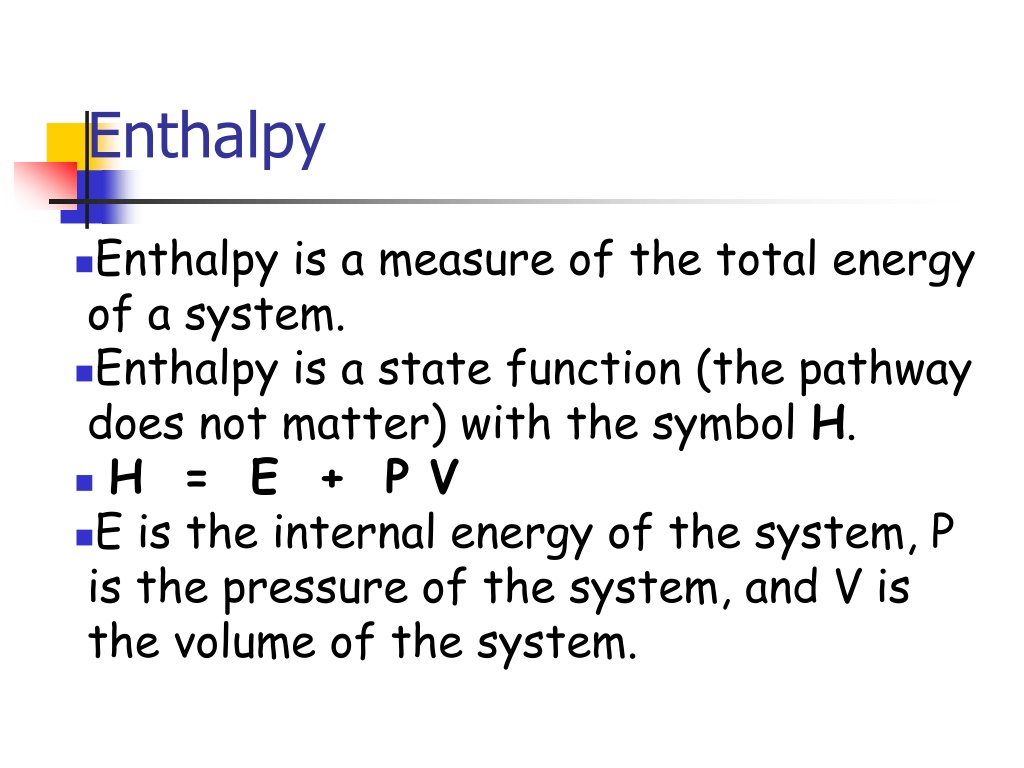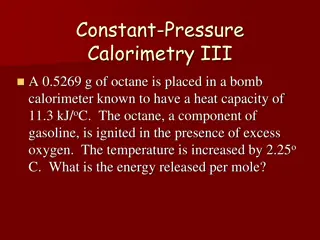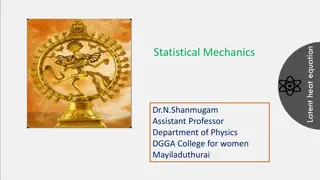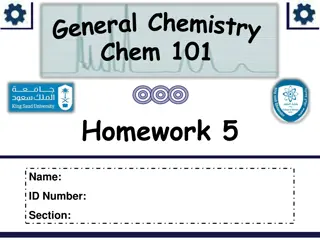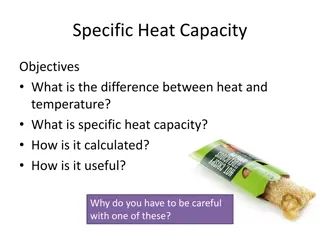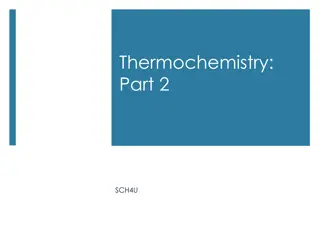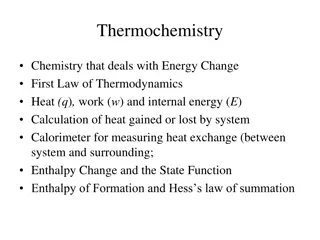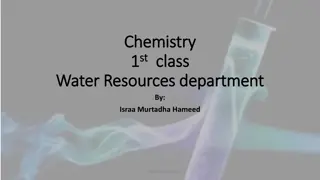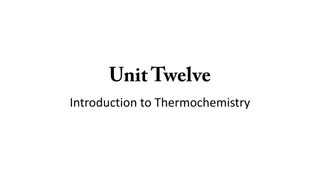Understanding Enthalpy and Heat Capacity in Chemistry
Enthalpy is a measure of total energy in a system, represented as H = E + P.V. Heat at constant pressure relates to enthalpy changes. Calorimetry and heat capacity help measure and understand heat in chemical reactions. Specific heat capacity and molar heat capacity play key roles in determining energy changes based on temperature and mass. Explore the equations and concepts behind enthalpy and heat capacity in this informative content.
Download Presentation

Please find below an Image/Link to download the presentation.
The content on the website is provided AS IS for your information and personal use only. It may not be sold, licensed, or shared on other websites without obtaining consent from the author. Download presentation by click this link. If you encounter any issues during the download, it is possible that the publisher has removed the file from their server.
E N D
Presentation Transcript
Enthalpy Enthalpy is a measure of the total energy of a system. Enthalpy is a state function (the pathway does not matter) with the symbol H. H = E + P V E is the internal energy of the system, P is the pressure of the system, and V is the volume of the system.
Heat at Constant Pressure The change in enthalpy of a system has no easily interpreted meaning except at constant pressure, where H = heat. H = Hproducts- H reactants. At constant pressure Exothermic means H is negative. Endothermic means H is positive.
Enthalpy When 1 mole of methane is burned at constant pressure, 890 kJ of energy is released as heat. Calculate H for a process in which a 5.8 g sample of methane is burned at constant pressure.
Calorimetry The device used experimentally to determine the heat associated with a chemical reaction is called a calorimeter. Calorimetry is the science of measuring heat. Heat capacity is the amount of heat required to raise an object s temperature one degree. * C = heat absorbed increase in temperature .
Heat Capacity Specific heat capacity is the energy required to raise the temperature of one gram of a substance by one degree Celsius. units are J/oC.g or J/K.g. Molar heat capacity is the energy required to raise the temperature of one mole of a substance one degree Celsius. units are J/oC.mol or J/K.mol.
The equation The symbol for heat energy is Molar heat capacity is C (J/mol K) Temperature is T (K) T is calculated by final temp-initial temp (Tf-Ti) The symbol for number of particles is n (mol) q = n C T q = n C (Tf- Ti) q (J) T, change in temperature is
------Or------ The symbol for heat energy is specific heat capacity is Temperature is T (K) T is calculated by final temp-initial temp (Tf-Ti) The symbol for mass q = m c T q = m c (Tf- Ti) q (J) c (J/ g K) T, change in temperature is m (g)
Heat Capacity Some common values are found in Table 6.1, p 251. * The higher the value, the longer it takes to heat an object and the longer it takes for that same object to cool.
If the pressure remains constant, the process is called constant-pressure calorimetry. Calorimetry experiments can also be carried out under conditions of constant volume. If V = 0, P V = 0, and E = qv
qlost= qgained Sign convention Losing energy means the value is negative. Gaining energy means the value is positive. The absolute value of the energy transferred will be the same. However, losing will be negative, gaining will be positive
Constant-Pressure Calorimetry I When 1.00 L of 1.00 M Ba(NO3)2solution at 25.0o C is mixed with 1.00 L of 1.00 M Na2SO4solution at 25o C in a calorimeter, the white solid BaSO4forms and the temperature of the mixture increases to 28.1 C. Assuming that the calorimeter absorbs only a negligible quantity of heat, that the specific heat capacity of the solution is 4.18 J/oC g, and that the density of the final solution is 1.0 g/mL, calculate the enthalpy change per mole of BaSO4 formed.
Constant-Pressure Calorimetry II One piece of copper jewelry placed at 100o C has exactly twice the mass of another piece, which is at 40o C. They are placed inside a calorimeter whose heat capacity is negligible. What is the final temperature inside the calorimeter? (c of copper = 0.387 J/g K).
Constant-Pressure Calorimetry III A .5269 g of octane is placed in a bomb calorimeter known to have a heat capacity of 11.3 kJ/C. The octane is ignited in the presence of gasoline. The temperature is increases by 2.25oC. What is the energy released per mole?
Enthalpy for phase changes There are constant values for the enthalpy of a phase change. The energy required to go from solid to liquid is called the heat of fusion (Hfus). The energy required to go from liquid to gas is called heat of vaporization (Hvap). q = H n For heating a substance, q = nC T or q = mc T
Quantitative Aspects of Changes of State The Heating-Cooling Curve.
Problem How much heat is required to heat 3.65 mol of ice at 15oC to steam at 115oC? Hfus= 6010 J/mol Hvap= 40,700 J/mol Cice= 38.09 Cwater= 75.3 Csteam= 36.8 (heat to melting-15 to 0) (heat to melt) (heat to boiling 0 to 100) (heat to boil off) (heat to 100 to 115) q = 3.65 (38.09) 15 + 3.65(6010) +3.65(75.3)100 + 3.65(40700) + 3.65(36.8)15 q = 202 kJ
